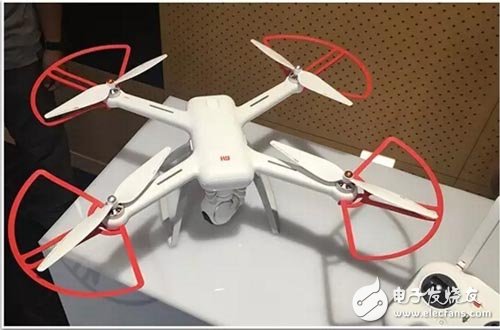May is an intensive period for the release of new products in the domestic science and technology sector. The most eye-catching ones are probably the three: May 15th, in the "Dong Mingzhu Open Class", after a year, Gree Mobile 2 officially unveiled; On the evening of the 25th, Xiaomi officially released its first drone product through the Xiaomi Live APP. However, the focus of the conference was obviously not that it challenged the Dajiang drone through low price, but whether there was a “fried machine†during the live broadcast; Then, on the evening of May 26, Huawei held a press conference in Beijing to officially announce the price and pre-sale time of the national version of Matebook. The industry is full of expectations in an exclamation.
If Huawei enters the two-in-one market of flat-panel notebooks, it is a reasonable extension from mobile phones, tablets, and PCs. The essence is the manufacture of communication hardware that is good at it. Then Gree continues to force the mobile phone industry, and Xiaomi rushes to nothing without warning. The man-machine industry is not just the layout of the ecological chain. Analysis of the product layout of Huawei Xiaomi Gree, perhaps we can look at one or two mysteries.
Capital driven or technology driven?
Xiaomi rushed into the drone market. In the words of Lei Jun, it was the pig looking for the wind.
Judging from the configuration and price of the UAV released by Xiaomi (2499 yuan to 2,999 yuan), this is a product that challenges the consumer-oriented UAV market in Xinjiang.

Dajiang is the overlord of drones in the market. According to the financial website MarketWatch, market research firm The NPD Group reported that between April 2015 and April 2016, US drone sales increased by 224% to nearly $200 million, while Dajiang was in North America. The drone market has a share of up to 50% and is the leading drone brand.
The millet drone that challenges Dajiang comes from the “flying rice technology†in Xiaomi ecological enterprise. The company was founded in May 2015 with a registered capital of 10 million US dollars. According to Lei Jun, the live broadcast of the day, Xiaomi UAV developed for two and a half years, and only 104 sets of molds were developed, costing more than 4 million. However, it is ironic that on the day of the live broadcast, there was a suspected "fried machine", which caused consumers to have more doubts about the quality of the millet drone.
Through the intervention of capital, Xiaomi quickly broke into various fields, among which mobile power, headphones, bracelets and other products were successful, but without exception, they all sold at a price-performance ratio, and did not get rid of Xiaomi's "cheap" color. The robots, VRs, and the drones of this time are still labeled as "silk".
The drone industry is a high-tech industry. Since 2006, Dajiang has been wide and deep in terms of patents. From UAV hardware equipment such as batteries, motors, and pan-tilt components, to UAV software innovations such as aircraft data processing methods and flight methods; from the design of UAV parts to the overall appearance of UAVs, Dajiang applied for patents. Protection can be said to be an all-dimensional three-dimensional patent protection system. Its R&D laboratory has already stocked the latest technology in the next 2-3 years and is a typical technology-driven enterprise. In contrast, Xiaomi, its UAV patents only stay at the application level, such as the bracelet control aircraft, drone folding, etc., the most important patents on flight control are still missing.

Therefore, it can be predicted that despite the financial situation, but the capital drive can not form industry competitiveness at least in the short term, Xiaomi is currently relying on investing in a newly created drone entrepreneurial team to truly become an industry competitor rather than a price. The spoiler is still to be observed.
What is the power to promote "cross-border robbery"?
Unlike Xiaomi looking for a ventricle everywhere, Gree’s entry into the smartphone industry has been called “cross-border robbery†by many people.
On May 15th, Dong Mingzhu held the first session of the Media Open Class in Guangzhou. The opening class was opened. Dong Mingzhu talked about the dreams and feelings of “Made in China†and took the opportunity to promote the latest Gree II mobile phones. Recently, Dong Mingzhu said in an interview that the second generation of Gree mobile phones was released less than one month, and there are already 350,000 orders. According to her goal, 100,000 units are sold every day, and 36 million a year.
The home appliance enterprise cross-border mobile phone, Gree is not the first, the former Chengren has Hisense, Konka, Amoi, the successful representative is OPPO and VIVO with BBK as the source, although today they and BBK are in the equity or Management has nothing to do with it. In 2015, VIVO mobile phone sales exceeded 40 million units. It is reported that VIVO shipments in the first quarter of 2016 have surpassed Xiaomi to rank among the top five in the world. It is one of the few domestic high-end mobile phone brands that have been recognized by the market. Excluding Chinese companies, overseas Samsung, LG, and Sony all entered the mobile phone industry when the home appliance business developed to a certain stage.
Shaoxing Tianlong Tin Materials Co.,Ltd. , https://www.tianlongspray.com